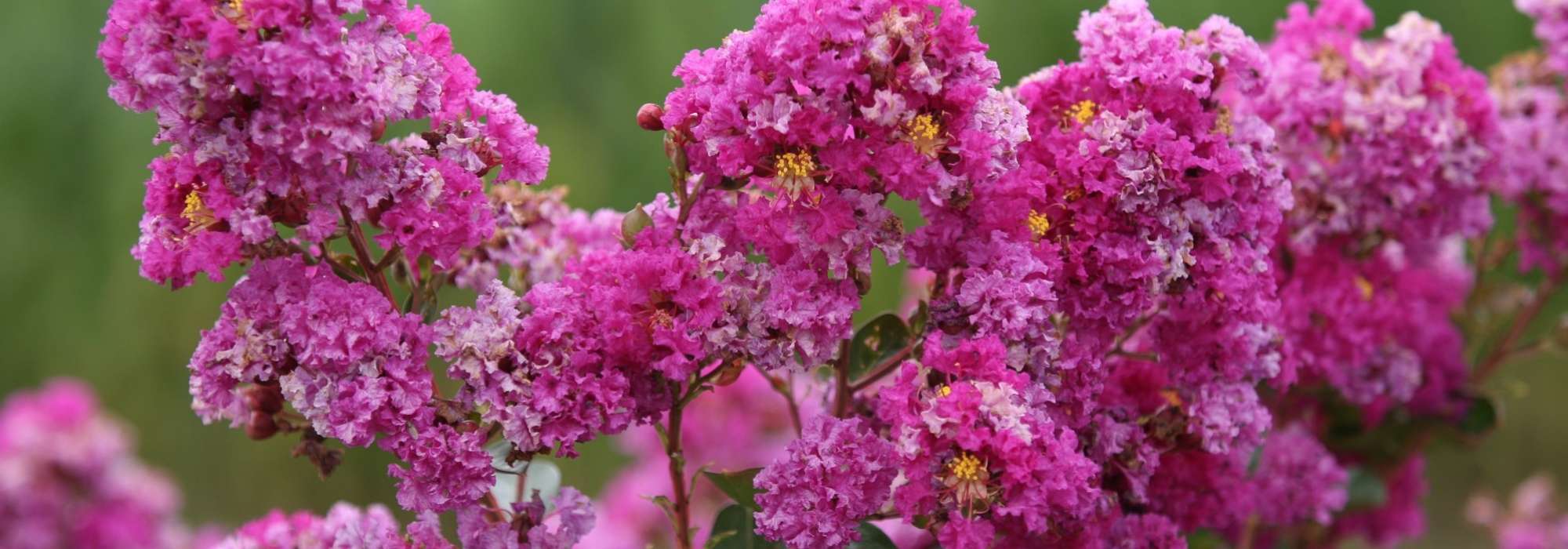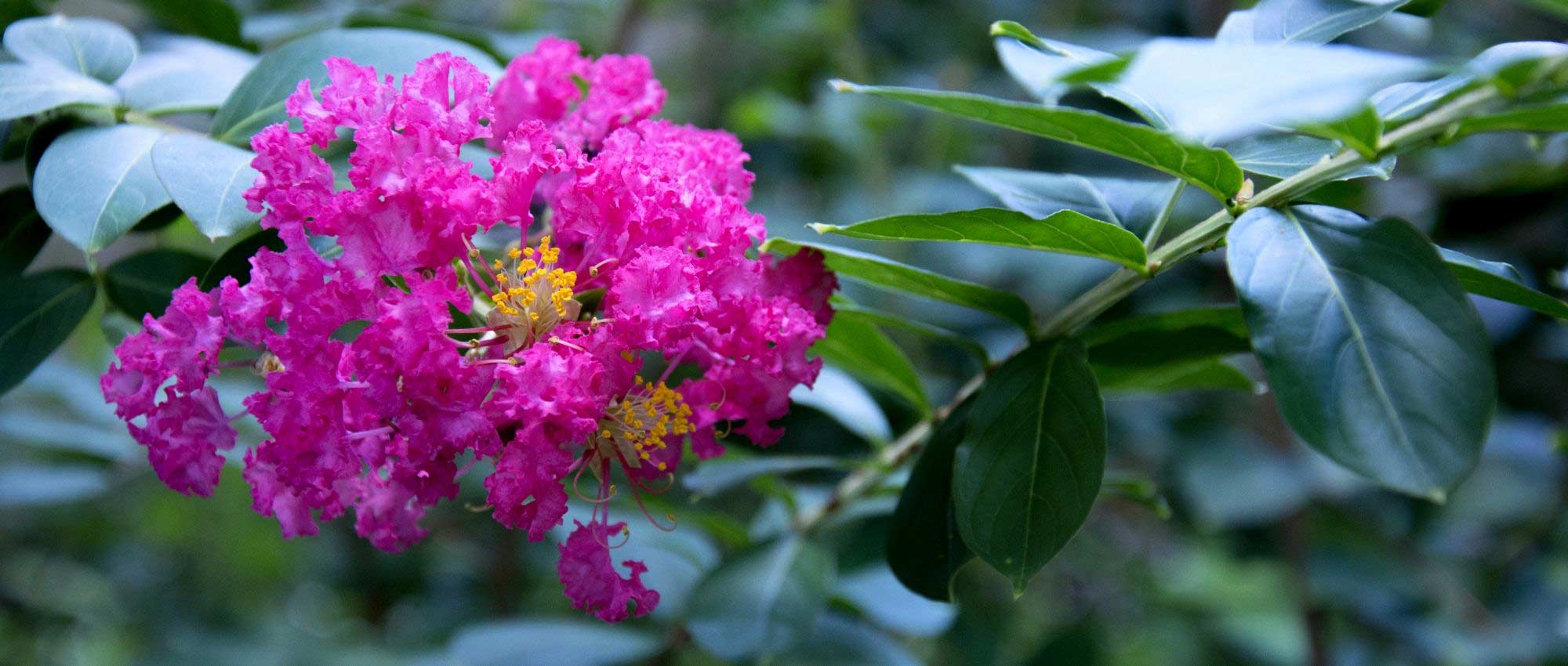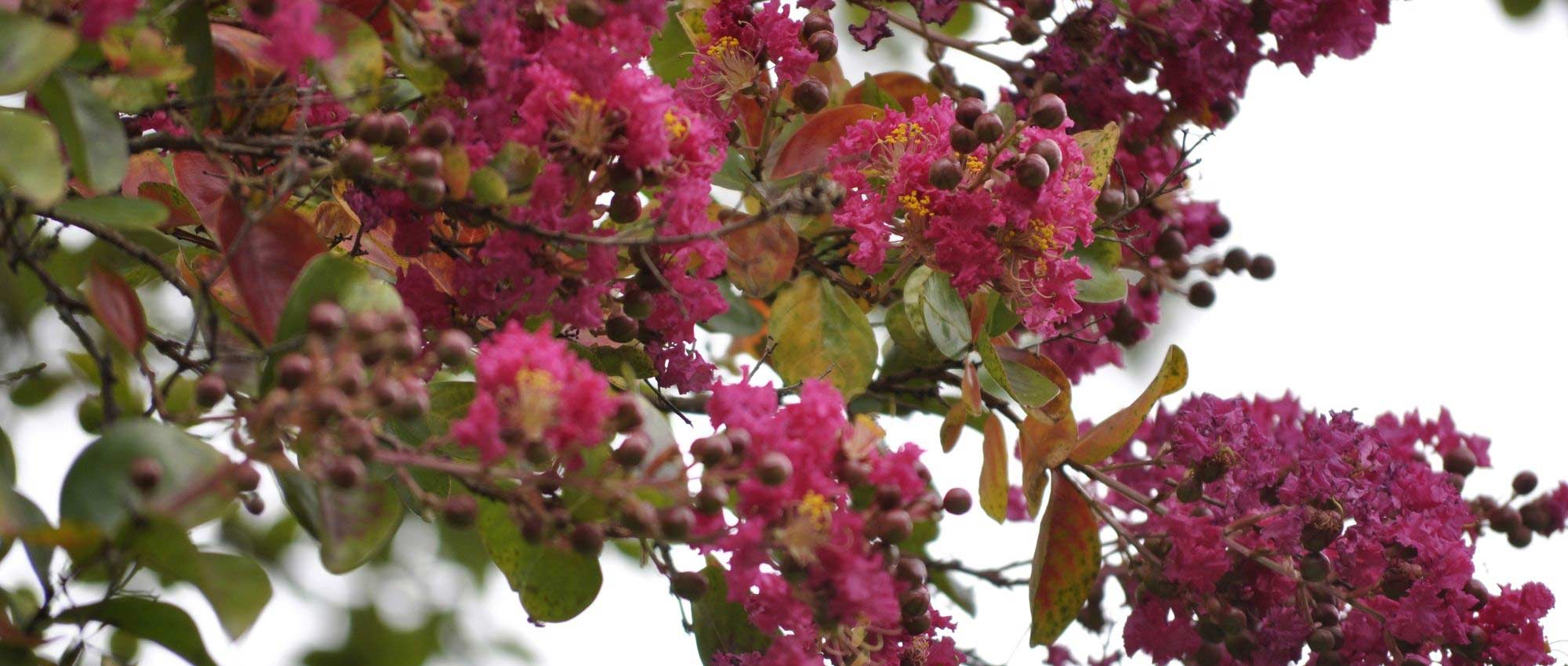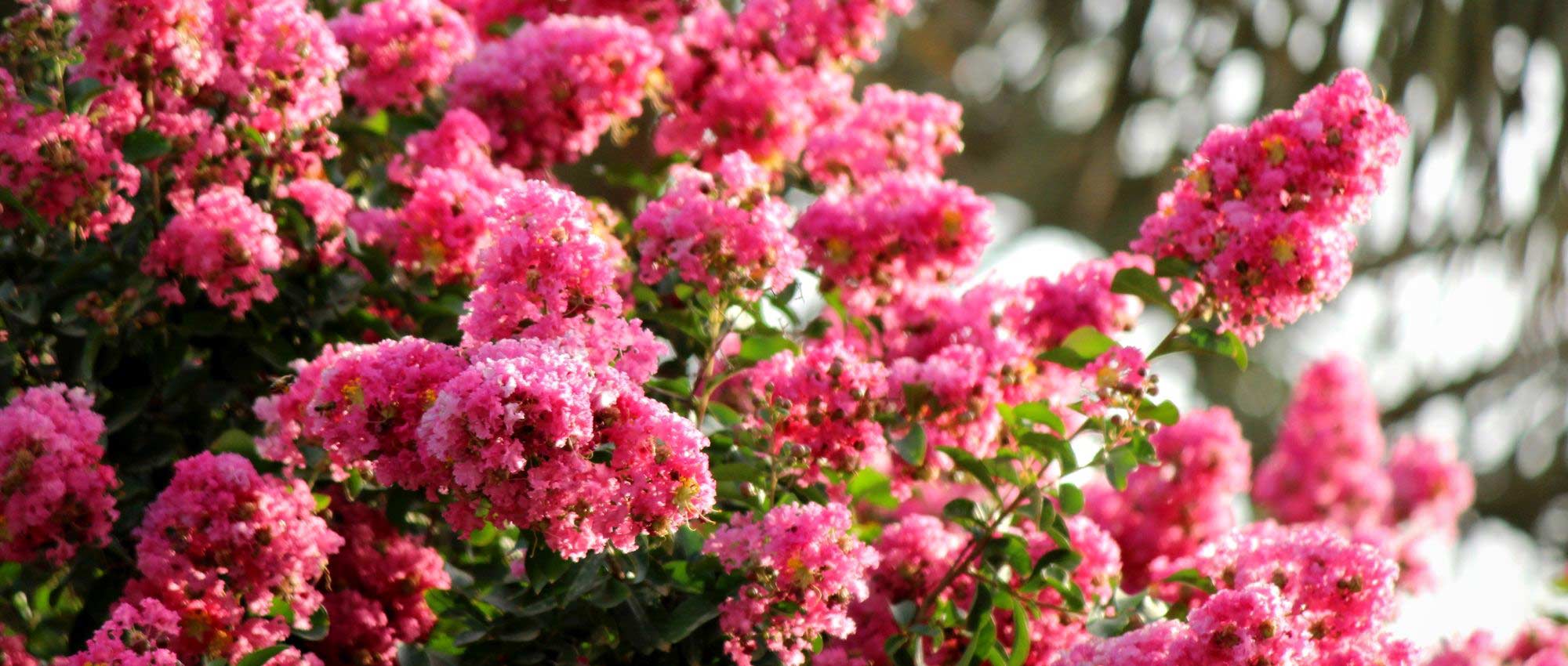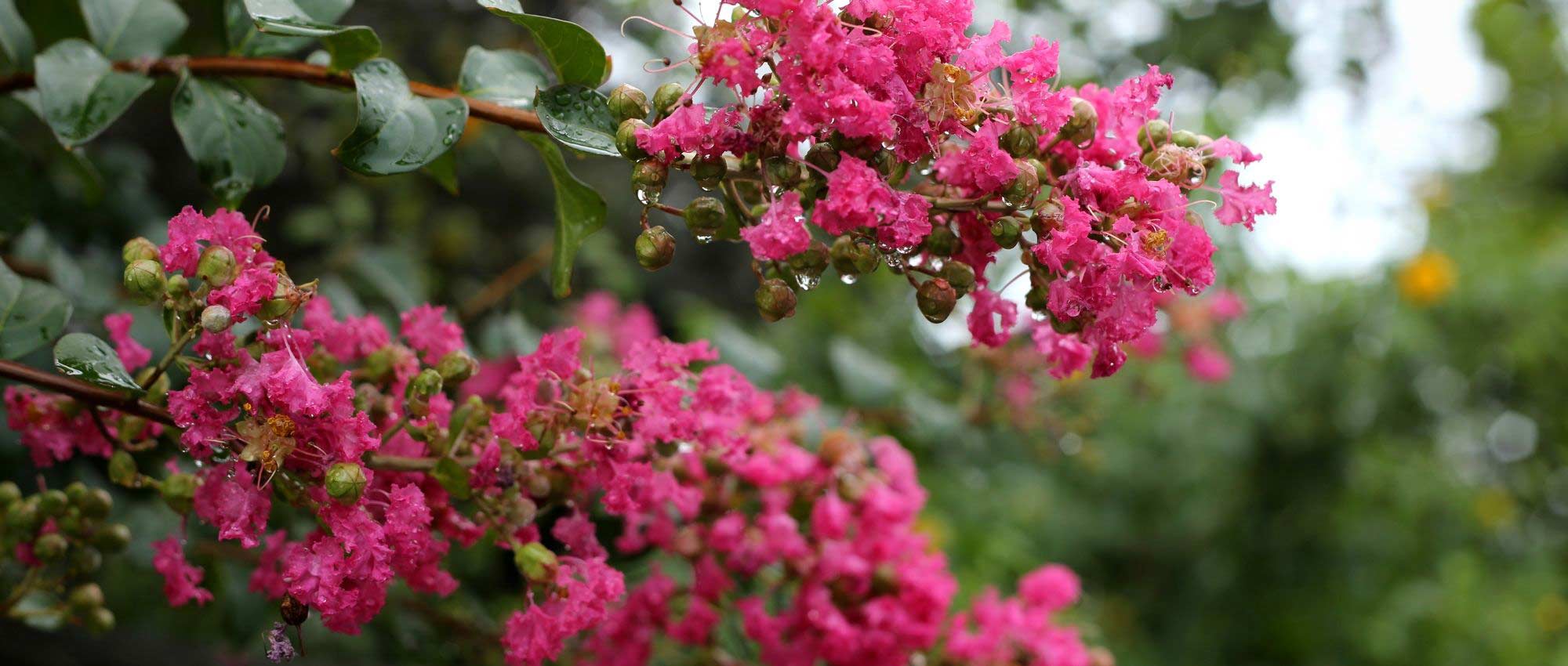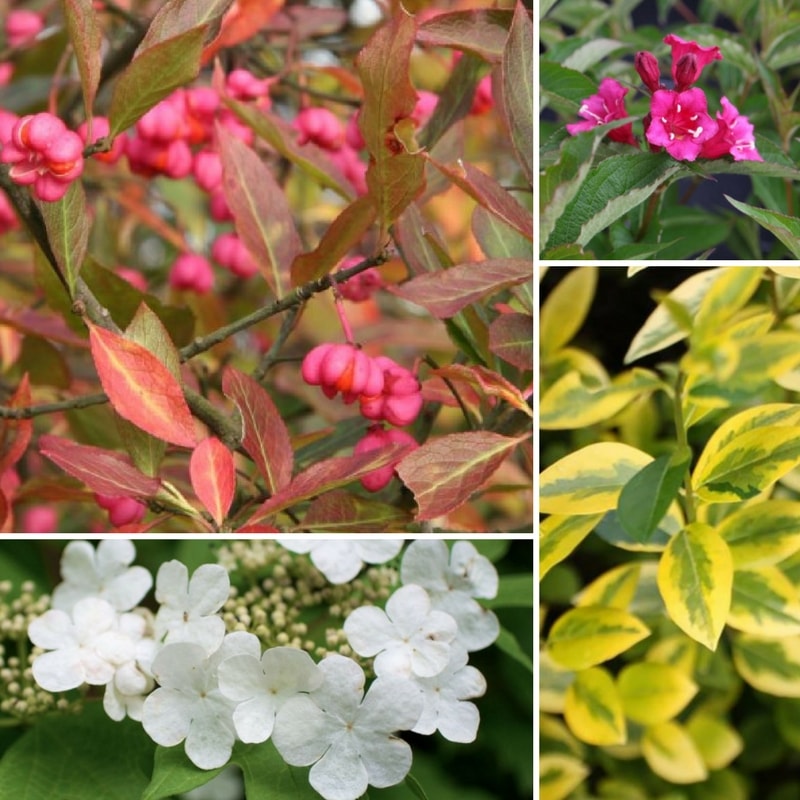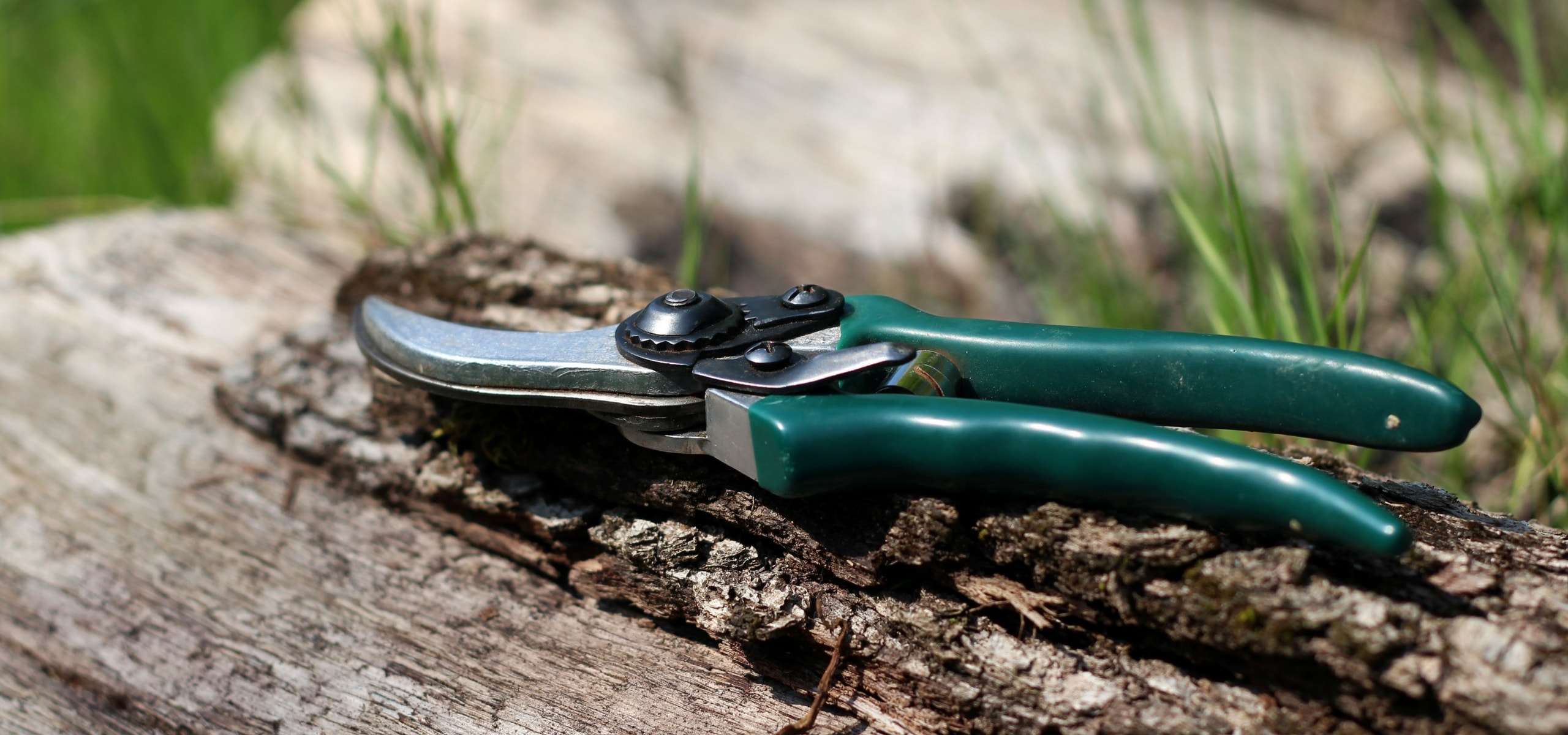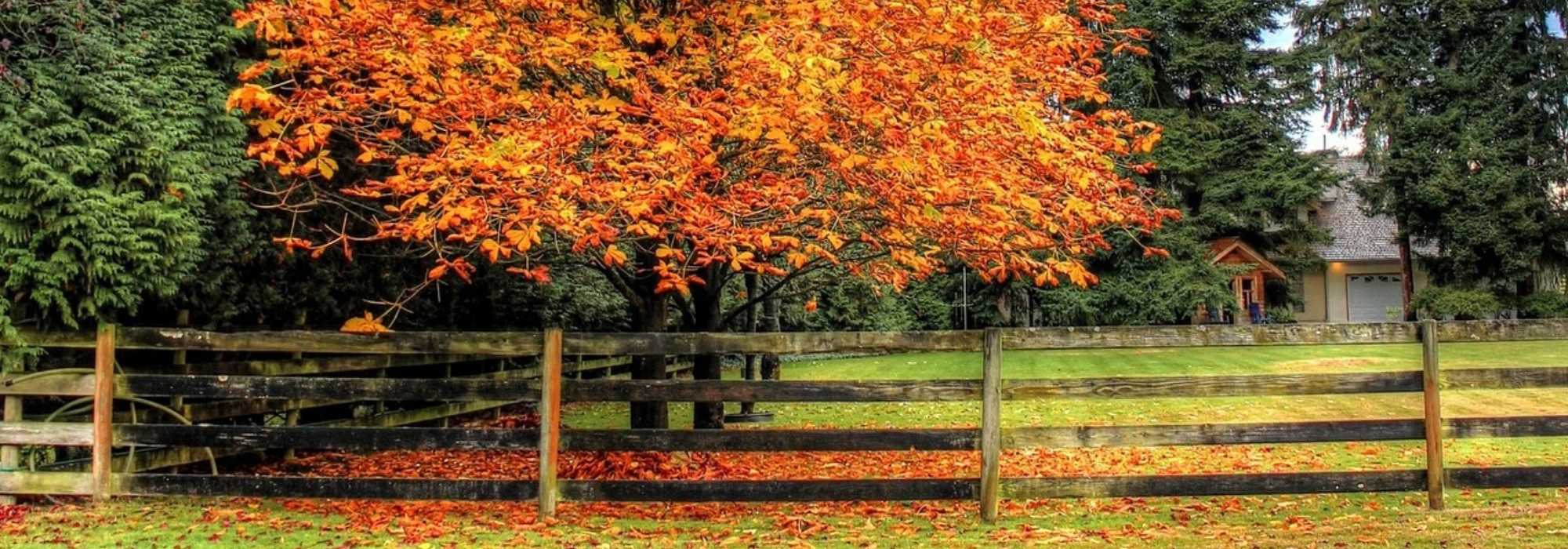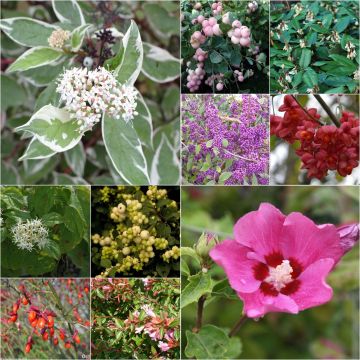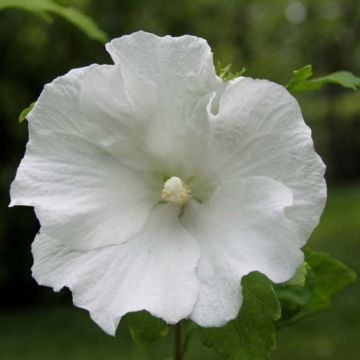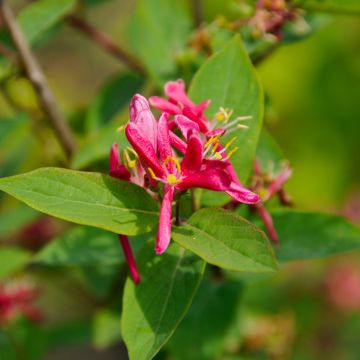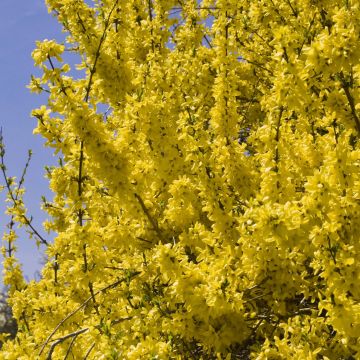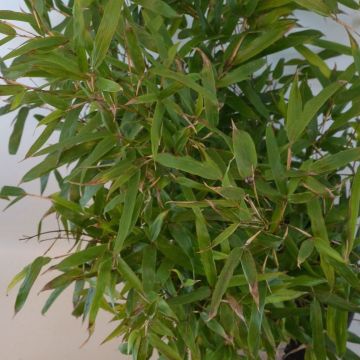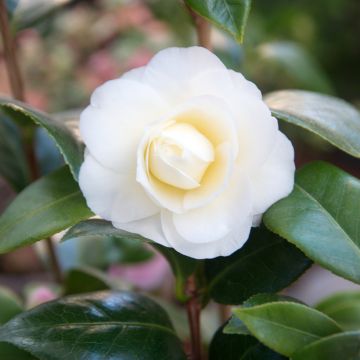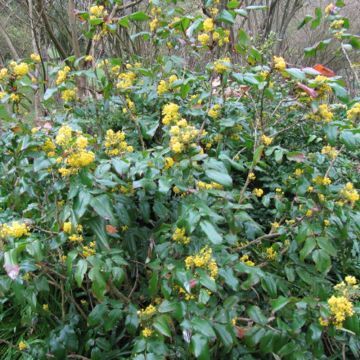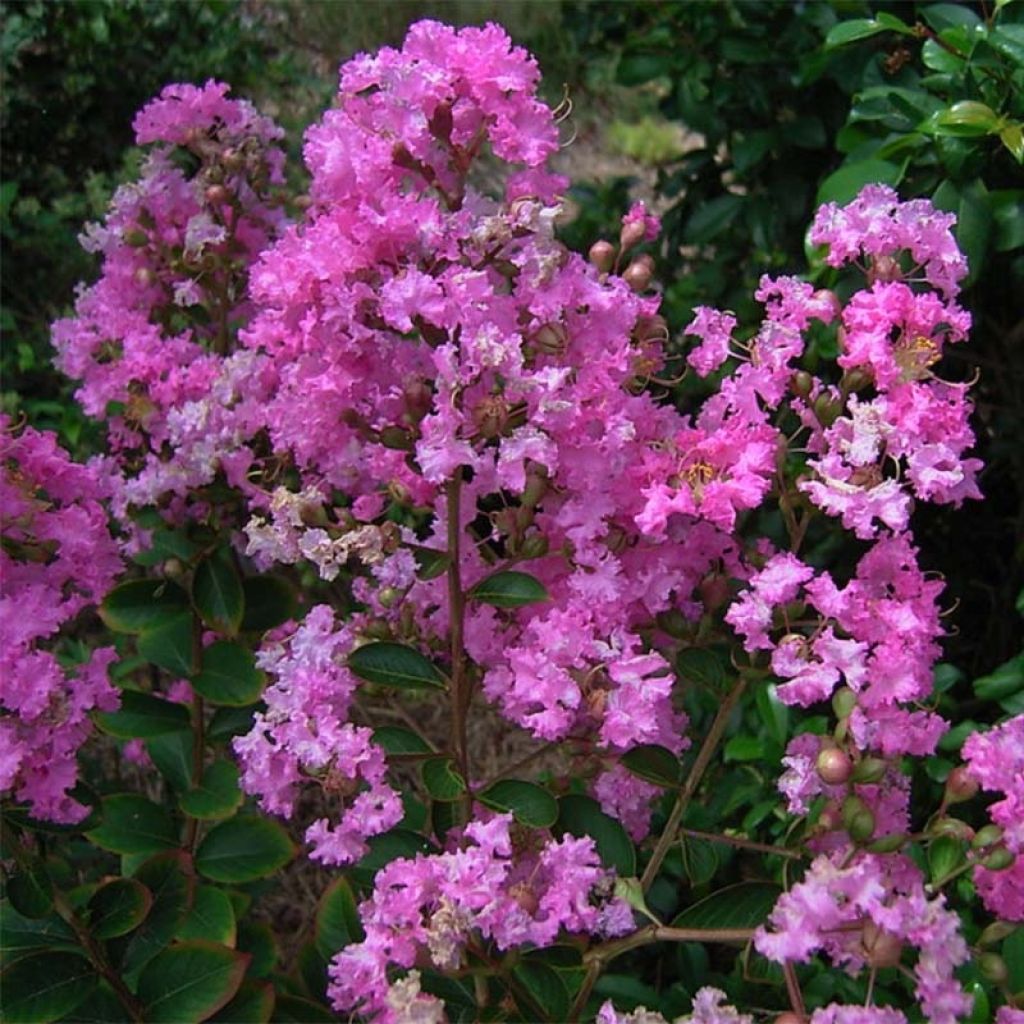

Lagerstroemia indica Jeanne Desmartis - Crape Myrtle
Lagerstroemia indica Jeanne Desmartis - Crape Myrtle
Lagerstroemia indica Jeanne Desmartis
Crape Myrtle, Crepe Myrtle, Indian Lilac
Note: This is not Lagerstroemia but 10 Navy Blue Agapanthus in 2/3 l pots. Order number 101288759, dispatched on 07/07/2022, by express delivery through Chronopost. (Invoice number 101055991). Half of the flowers were broken.
Alain B., 03/01/2023
Special offer!
Receive a €20 voucher for any order over €90 (excluding delivery costs, credit notes, and plastic-free options)!
1- Add your favorite plants to your cart.
2- Once you have reached €90, confirm your order (you can even choose the delivery date!).
3- As soon as your order is shipped, you will receive an email containing your voucher code, valid for 3 months (90 days).
Your voucher is unique and can only be used once, for any order with a minimum value of €20, excluding delivery costs.
Can be combined with other current offers, non-divisible and non-refundable.
Home or relay delivery (depending on size and destination)
Schedule delivery date,
and select date in basket
This plant carries a 24 months recovery warranty
More information
We guarantee the quality of our plants for a full growing cycle, and will replace at our expense any plant that fails to recover under normal climatic and planting conditions.

Would this plant suit my garden?
Set up your Plantfit profile →
Description
The Lagerstroemia indica 'Jeanne Demartis' is an Indian Lilac with abundant summer flowering of a beautiful deep pink, from mid-July to mid-August. During hot summers, it is not uncommon to see it offer a second flowering. This variety forms a bushy and compact bush, well branched. Its deciduous foliage, shiny green, colours from the beginning of autumn with warm shades. Eager for sun and heat, this variety will thrive better in warmer climates. Indian lilacs are among the most beautiful summer-flowering shrubs. As such, they deserve a place of choice in the garden or on the terrace.
The Lagerstroemia indica 'Jeanne Demartis' belongs to the Lythraceae family. Lagerstroemia indica, from which it originates, is native to China. The cultivar 'Jeanne Demartis' was selected in 1973 at the Demartis nursery in Dordogne. This vigorous and well-branched bush forms a tuft of 1.5 to 2 m (4 ft 11 in - 6 ft 7 in) in height at maturity, with a diameter of about 2 m (6 ft 7 in). Its growth is quite fast. Its flowering generally starts in July and lasts until mid-August. The flowers are characterised by fine pedicels, each bearing five undulate-edged petals that make up this flower. The flowers, whose texture resembles that of crepe, are gathered in large and dense panicles at the end of the branches of the year. In 'Jeanne Demartis', the flowering is a deep and bright pink. The foliage, leathery and deciduous, is red and becomes shiny dark green. It is composed of small oval leaves, which sometimes take on pretty yellow or red hues in autumn, depending on the climate. Finally, and to finish beautifully, its bark is of great beauty, smooth, beige streaked with brown-red, peeling off in coloured patches (cinnamon, faded red, old pink, cream).
Indian Lilacs are small trees widely known for being a source of pride for gardens in warmer climates. They do best in warm, humid weather instead of dry and windy areas. If you carefully choose the right location, they can be acclimatised in colder regions. Indian Lilacs are hardy and vigorous and can make a great impression when planted near the house. They can create a beautiful flowering display in a shrub bed or hedge or when emerging from a mound of perennials. You can also create a beautiful bed of these trees by planting them alongside Campanula pyramidalis, Salvia sclarea, and Aster laevis. During autumn, Indian Lilacs produce a colourful display that's just as impressive. They can also add a stunning touch to any large pot on the terrace, especially as summer flowering slows down.
Note that the tree was named by Karl Von Linné in honour of his friend Magnus Von Lagestroem (1696-1759), who had sent it from India for identification. Originally, the tree served as a decoration in Chinese temples. However, it is important to note that its fruits have a narcotic effect if consumed.
Lagerstroemia indica Jeanne Desmartis - Crape Myrtle in pictures
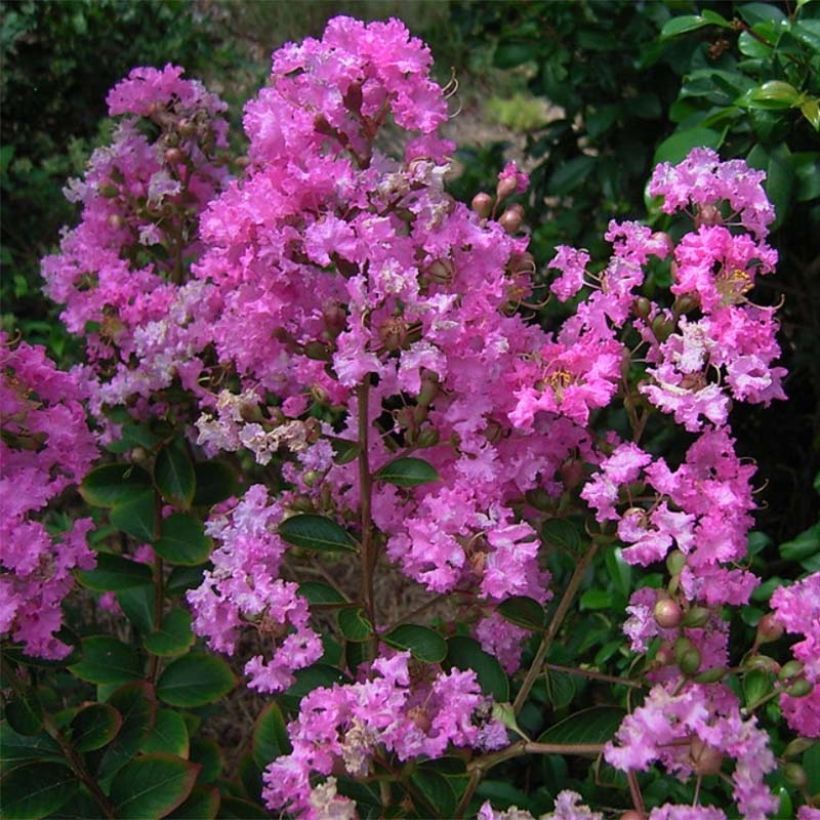

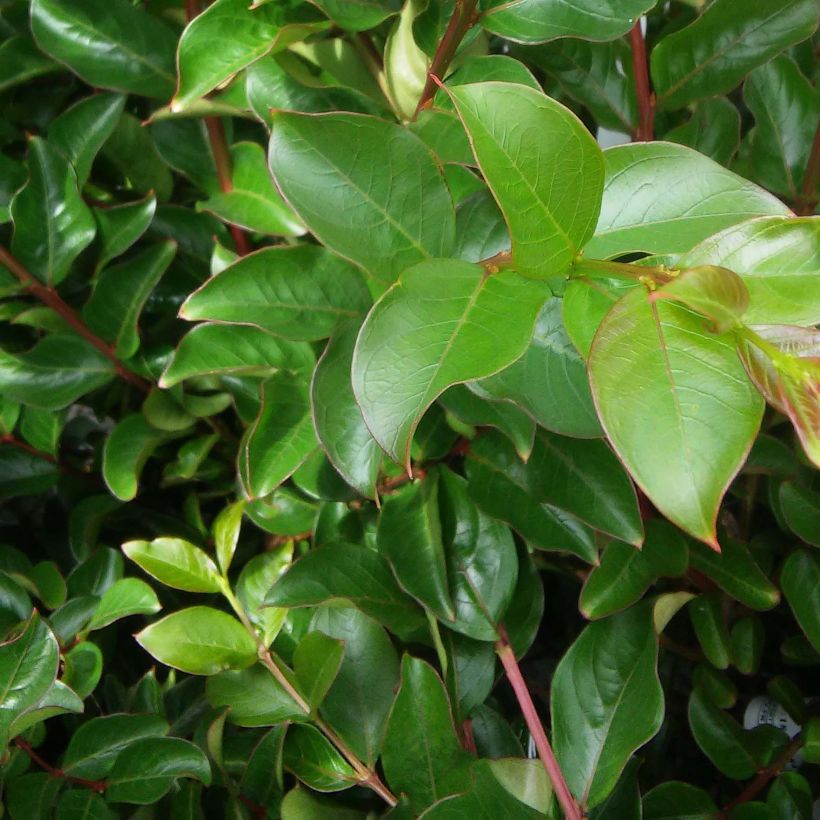

Plant habit
Flowering
Foliage
Botanical data
Lagerstroemia
indica
Jeanne Desmartis
Lythraceae
Crape Myrtle, Crepe Myrtle, Indian Lilac
Cultivar or hybrid
Planting and care
To plant Lagerstroemia indica Jeanne Demartis, choose a warm and sunny spot with well-drained and nutrient-rich soil. Once planted in the spring, enrich the soil around the plant every year with well-rotted manure and leaf compost. In the spring, prune back the plant, leaving only two or three buds per branch. Also, take care to treat for powdery mildew. If you live in colder regions, it's advisable to wrap the entire branches in horticultural fleece throughout the winter to protect the plant.
Planting period
Intended location
Care
Planting & care advice
-
, onOrder confirmed
Reply from on Promesse de fleurs
Similar products
Haven't found what you were looking for?
Hardiness is the lowest winter temperature a plant can endure without suffering serious damage or even dying. However, hardiness is affected by location (a sheltered area, such as a patio), protection (winter cover) and soil type (hardiness is improved by well-drained soil).

Photo Sharing Terms & Conditions
In order to encourage gardeners to interact and share their experiences, Promesse de fleurs offers various media enabling content to be uploaded onto its Site - in particular via the ‘Photo sharing’ module.
The User agrees to refrain from:
- Posting any content that is illegal, prejudicial, insulting, racist, inciteful to hatred, revisionist, contrary to public decency, that infringes on privacy or on the privacy rights of third parties, in particular the publicity rights of persons and goods, intellectual property rights, or the right to privacy.
- Submitting content on behalf of a third party;
- Impersonate the identity of a third party and/or publish any personal information about a third party;
In general, the User undertakes to refrain from any unethical behaviour.
All Content (in particular text, comments, files, images, photos, videos, creative works, etc.), which may be subject to property or intellectual property rights, image or other private rights, shall remain the property of the User, subject to the limited rights granted by the terms of the licence granted by Promesse de fleurs as stated below. Users are at liberty to publish or not to publish such Content on the Site, notably via the ‘Photo Sharing’ facility, and accept that this Content shall be made public and freely accessible, notably on the Internet.
Users further acknowledge, undertake to have ,and guarantee that they hold all necessary rights and permissions to publish such material on the Site, in particular with regard to the legislation in force pertaining to any privacy, property, intellectual property, image, or contractual rights, or rights of any other nature. By publishing such Content on the Site, Users acknowledge accepting full liability as publishers of the Content within the meaning of the law, and grant Promesse de fleurs, free of charge, an inclusive, worldwide licence for the said Content for the entire duration of its publication, including all reproduction, representation, up/downloading, displaying, performing, transmission, and storage rights.
Users also grant permission for their name to be linked to the Content and accept that this link may not always be made available.
By engaging in posting material, Users consent to their Content becoming automatically accessible on the Internet, in particular on other sites and/or blogs and/or web pages of the Promesse de fleurs site, including in particular social pages and the Promesse de fleurs catalogue.
Users may secure the removal of entrusted content free of charge by issuing a simple request via our contact form.
The flowering period indicated on our website applies to countries and regions located in USDA zone 8 (France, the United Kingdom, Ireland, the Netherlands, etc.)
It will vary according to where you live:
- In zones 9 to 10 (Italy, Spain, Greece, etc.), flowering will occur about 2 to 4 weeks earlier.
- In zones 6 to 7 (Germany, Poland, Slovenia, and lower mountainous regions), flowering will be delayed by 2 to 3 weeks.
- In zone 5 (Central Europe, Scandinavia), blooming will be delayed by 3 to 5 weeks.
In temperate climates, pruning of spring-flowering shrubs (forsythia, spireas, etc.) should be done just after flowering.
Pruning of summer-flowering shrubs (Indian Lilac, Perovskia, etc.) can be done in winter or spring.
In cold regions as well as with frost-sensitive plants, avoid pruning too early when severe frosts may still occur.
The planting period indicated on our website applies to countries and regions located in USDA zone 8 (France, United Kingdom, Ireland, Netherlands).
It will vary according to where you live:
- In Mediterranean zones (Marseille, Madrid, Milan, etc.), autumn and winter are the best planting periods.
- In continental zones (Strasbourg, Munich, Vienna, etc.), delay planting by 2 to 3 weeks in spring and bring it forward by 2 to 4 weeks in autumn.
- In mountainous regions (the Alps, Pyrenees, Carpathians, etc.), it is best to plant in late spring (May-June) or late summer (August-September).
The harvesting period indicated on our website applies to countries and regions in USDA zone 8 (France, England, Ireland, the Netherlands).
In colder areas (Scandinavia, Poland, Austria...) fruit and vegetable harvests are likely to be delayed by 3-4 weeks.
In warmer areas (Italy, Spain, Greece, etc.), harvesting will probably take place earlier, depending on weather conditions.
The sowing periods indicated on our website apply to countries and regions within USDA Zone 8 (France, UK, Ireland, Netherlands).
In colder areas (Scandinavia, Poland, Austria...), delay any outdoor sowing by 3-4 weeks, or sow under glass.
In warmer climes (Italy, Spain, Greece, etc.), bring outdoor sowing forward by a few weeks.






























